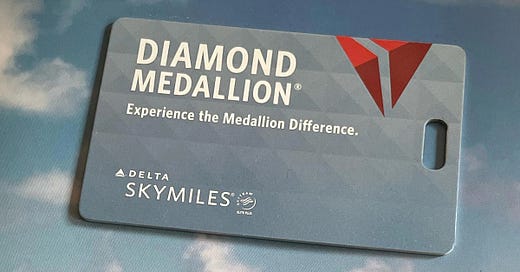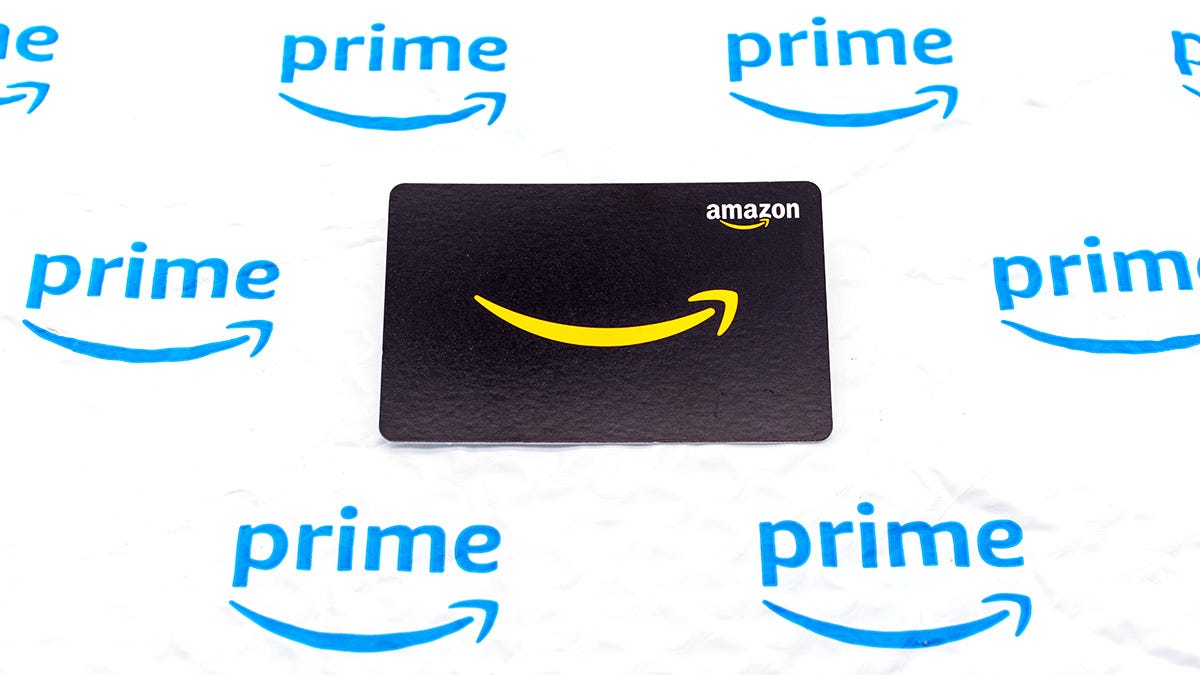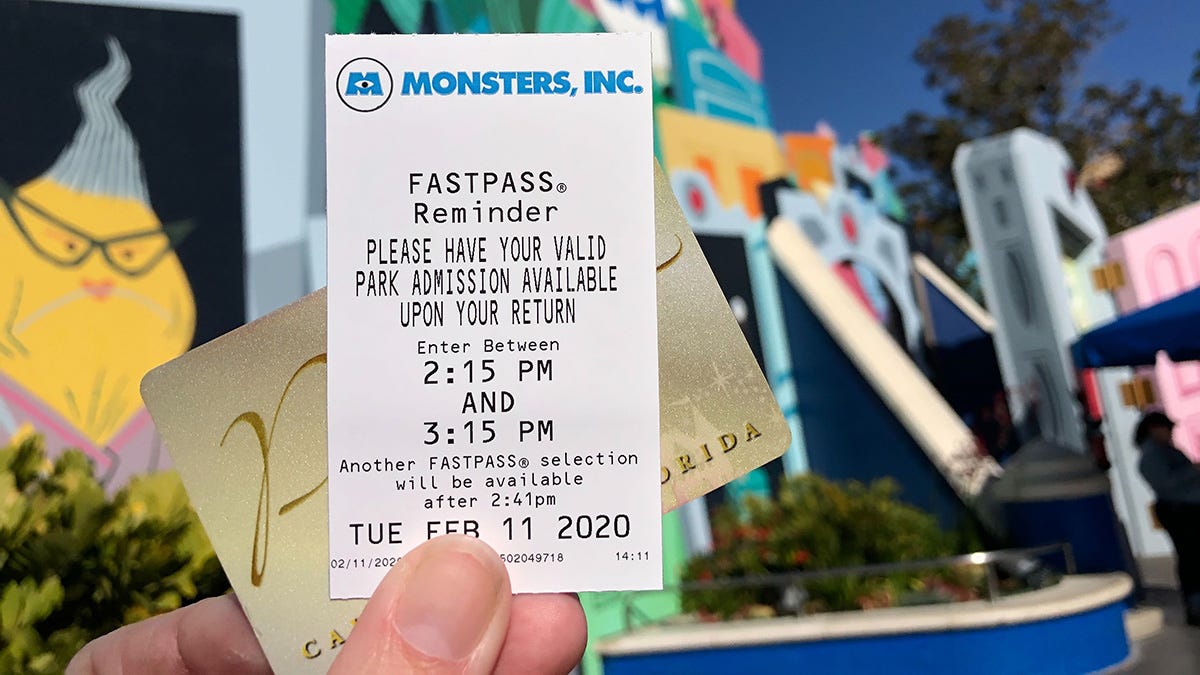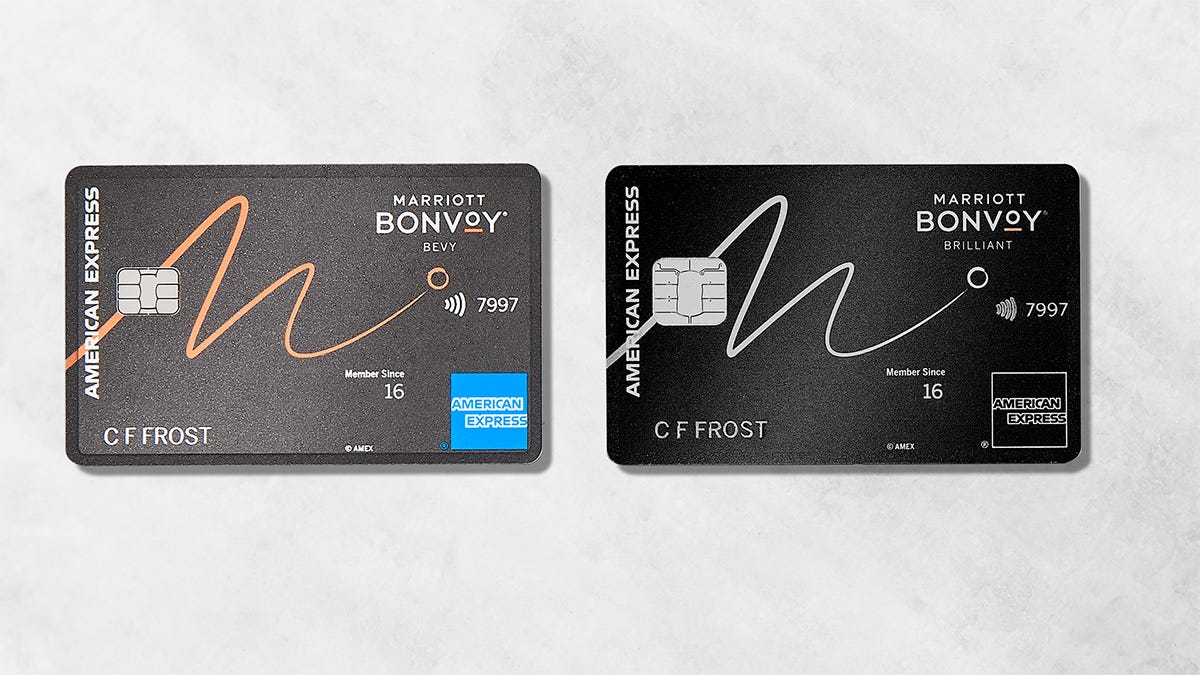Hi everyone,
Of the 100+ MarketingBS essays I’ve written over the past three-and-a-half years, this 2019 post on loyalty programs remains one of the most read.
With the recent news about Marriott’s credit card shuffle, it seemed like a good time to revisit the topic.
—Edward
This Week’s Sponsor
You found global talent. Deel’s here to help you onboard them
At Deel, we've simplified a world's worth of global hiring information. Our expert teams can help you navigate quick and compliant hiring in 150+ countries and so much more. Download your guide.
Valuing status
On September 22, Marriott dramatically revamped their credit card portfolio. They introduced two new cards and implemented major changes to the benefits associated with their current offerings.
To fully understand the implications of Marriott’s credit card restructuring, we need to step back and look at the history and economics of status-tiered loyalty programs.
In most cases, loyalty programs have offered two types of benefits:
Points currency
Status tiers
Take, for instance, an airline like Delta. When you fly on Delta, you “earn” points based on the dollars you spend on their flights; you can then use those points to pay for seats on future trips. In addition, you also earn “status miles” (branded by Delta as “Medallion Qualifying Miles”). You cannot collect and redeem MQMs for spending on travel — they are just a tool for determining which “status tier” you will be granted by the airline.
New travelers have “no status” with Delta, but after traveling 25,000 miles (about 5 return trips between New York and Los Angeles) and spending $3000 — all within a calendar year — they can earn their “Silver Medallion.” Benefits of Silver Medallion are relatively limited and include things like free baggage allowances, earlier boarding (than non-status, non-credit card, non-families, non-military…), and a minor acceleration to their collection of currency points (7 miles per dollar instead of the baseline 5 miles per dollar for people with no status). The real benefits of Delta status tiers kick in when a traveler earns “Platinum” (75,000 miles and $9000) or “Diamond” (125,000 and $15,000) Medallions. Diamond customers are regularly upgraded to business class, earn lots of free points, and receive complimentary Delta Club and CLEAR memberships.
Calculating the US dollar value of loyalty points is relatively easy: you just look at what the points can buy, look at what those things cost with USD, and do some basic division.
But figuring out the total value of status tiers is much more difficult. Some of the perks can be reasonably evaluated; for example, the value of point accelerators (earn 11 miles per dollar instead of 5 miles per dollar) can be estimated based on your predicted future travel. But what is the value of being periodically upgraded to business class? What is the value of a dedicated VIP customer service line? What is the value of feeling like your business matters to the employees you interact with?
Not only are these “soft benefits” much harder to quantify, but they also vary dramatically from one customer to another. For someone rebooking a flight, a priority phone number could (easily!) save an hour — that benefit is worth far more to a lawyer who bills $1000 per hour than someone with ample time to wait on the line.
In addition to the ambiguous value, here’s another interesting characteristic of soft benefits for loyalty tiers: they do not cost the company that much. If Delta has an empty seat in business class, the cost of upgrading an economy passenger is essentially zero. (There is some risk of cannibalizing customers who could purchase business class but bought an economy ticket with the assumption they would get upgraded; that risk can be balanced by “trialing” business class to someone who might conceivably opt for that fare level in the future). The limit to these soft benefits is not monetary, but rather a limit in the available supply — only a small number of passengers can be upgraded before all the business class seats are filled.
Rather than “gifting” the tier benefits randomly, loyalty programs are the first attempt to monetize that limited supply. In a previous Marketing BS post, I explained how loyalty point-based programs do NOT do a very good job of engendering loyalty.
But status tiers CAN impact customer loyalty in two important ways:
Acceleration: If a customer is close to hitting the next tier, it can be economically rational for the user to accelerate spending. I am not the first person to book a same-day return flight in December in order to earn the last 1000 miles I needed to hit Diamond status.
Consolidation: Once you’ve earned status at a particular company, it usually makes sense to consolidate your spending with that company. If you have free shipping from Amazon, but not Walmart, then everything you buy at Amazon is effectively less expensive at any given price point. If I am earning 11 points per dollar when I fly Delta and 5 points per dollar when I fly American, then Delta wins on ties. If I get to skip the check-in line, board early, and get upgraded to business class when I fly Delta, it will be very hard for American to compete at even drastically lower prices.
In theory, any company could create these types of tiered benefits, but in practice, it’s been almost exclusively hospitality companies. Loyalty tiers have allowed airlines and hotels to influence the behavior of otherwise price-insensitive, high-category spenders. Consider, for instance, a McKinsey (or similar) business consultant who travels a significant part of each year — they don’t typically make spending choices based on discounts, but they will if consolidating their spending makes future travel easier on their life.
Although bonus airline or hotel points might be nice to accumulate for personal travel, most consultants’ time is better used earning more money than optimizing travel discounts. But hitting a new status tier, on the other hand, is often far more important to their future comfort than money; as Mastercard says, “There are some things money can't buy.”
New approaches to loyalty
Traditionally, the only way to enjoy soft benefits was by earning them (via spending more money, taking more flights, staying more nights, etc.). But we live in a market-based economy, and companies have been slowly finding ways to monetize the soft benefits of loyalty tiers.
The first example is (likely) the best retailer loyalty program ever made: Amazon Prime.
When Amazon developed their loyalty program, they could have offered free 2-day shipping to any customer who spent more than $10,000 per year on online orders — call it “Amazon Diamond.” Instead, the company introduced a way for customers to directly BUY loyalty status. For the then-price of $79 per year (it’s now $139), anyone could enjoy free 2-day shipping on anything they purchased from Amazon. There is no way to “earn” status with Amazon; you just need to pay for it.
Another example to come along was CLEAR Secure. The company had a rough start (folding in 2008, re-starting in 2010, and struggling for many years to scale), but the model has always been the same: customers pay an annual subscription fee and then skip to the front of the security line at many airports.
For the airports, there is no cost to allow CLEAR customers to skip the line (although there’s obviously a limit on how many people can skip to the front of a line without causing chaos for the non-CLEAR passengers). In theory, airports could have allowed frequent travelers to jump to the front of the line, but instead they have outsourced tier management to CLEAR in exchange for 10-12% of the company’s revenue.
Like Amazon, CLEAR has monetized loyalty. Instead of giving the soft benefit away for free (like airlines do), CLEAR allows customers to directly pay for the benefit. Because the value of the benefit depends on the amount you travel, CLEAR is most appealing to the very price insensitive and/or the very frequent travelers. Loyal customers still receive special treatment, but now they pay extra for it.
The status of skipping lines
Disney Theme Parks offer another fascinating case study for changes to loyalty programs.
Even though the theme parks are a model for extreme efficiency, Disney continues to experiment with ways to reduce the pain of having guests wait — sometimes hours — in line for the rides. (I get more joy out of watching Disney Park operations than I do on the actual rides. Once my kids turn 16, I need to convince them to join me for a behind-the-scenes tour of the underground supply tunnels and other secrets).
Back in 1999, Disney unveiled the FastPass, which allowed guests to reserve a spot in line for the most popular attractions. You would walk up to an automated kiosk, scan your admission pass, and then receive a paper ticket with a specific window of time; when you and your group returned during your designated slot, you could jump directly to the front of the line. In essence, FastPass allowed visitors to wait in two lines simultaneously. If you were smart and organized — which is sort of a proxy for loyalty — you could enjoy a more exciting Disney experience than people who stood in line all day. (And in practical terms, a savvy FastPass strategy could double the number of rides you could manage in a day).
With the advent of smartphones and wifi, FastPass evolved to become a feature of the Disney app. In addition to the option of running around the parks to collect physical tickets, guests could simply add themselves to the virtual lines directly from their phones. As you might imagine, though, improving the convenience of the FastPass risked diminishing its time-saving benefits. If everyone could jump to the front of the line, what’s the point? Plus, Disney recognized that throngs of line-skippers would negatively impact the happiness of non-FastPass users. As a way to balance efficiency with satisfaction, Disney imposed various restrictions to FastPass usage, availability, and duration.
Note that FastPasses were FREE. In 2017, Disney introduced a paid option, called MaxPass. For $20 per day, guests could access FastPasses more frequently (in addition to other perks like unlimited photos).
When COVID struck, Disney suspended all FastPass and MaxPass usage — with the parks running at partial capacity, the systems no longer made sense. (They even removed all the automated ticket-printing kiosks.)
In August 2021, Disney revamped their theme park app. The free Genie platform provides personalized ways to plan your trip, order food, and learn about attractions. And Genie+ is a new PAID service for skipping lines (via the re-branded “Lightning Lanes”). Unlike the way that paid MaxPasses complemented the free FastPasses, Genie+ is now the ONLY way to skip the lines. In other words, guests now need to pay for a benefit that Disney gave away for more than 20 years.
At launch, the price of Genie+ was set at $15 per day. Last week, Disney announced “demand-based pricing” Genie+ — and the price is only revealed on the day that people visit. I expect Disney is running price elasticity tests to understand the relative impact of different volumes of Genie+ users on queue length (so far, the highest price observed has been $22).
Genie+ is not the only way that Disney increased the monetization of “skip the line” programs. The four most popular Disney rides — Guardians of the Galaxy Cosmic Rewind, Star Wars Rise of the Resistance, Avatar Flight of Passage, and Seven Dwarfs Mine Train — are excluded from Genie+. To access the Lightning Lanes for those rides, guests need to purchase a separate add-on pass — at the cost of $10-17 per line skipped.
For years, Disney guests could dramatically improve their park experience through some planning and hustle. That’s still possible, but guests will also need to spend at least $15 per day — and probably more like $40 — to enjoy the same results.
How many people are opting for the increased status? On a recent earnings call, Disney CEO Bob Chapek estimated that 50% of park visitors are currently paying for Genie+.
When half of the customers are VIPs, is anyone a VIP?
Sidenote — demand for in-person experiences has grown beyond anything we saw pre-COVID. Case in point: Disney Park expenditures were up 40% in Q2 2022 versus the same period in 2019.
As anyone who has visited a Disney Park (or any tourist attraction) during a major holiday knows, the quality of the experience is inversely proportional to the number of other people you need to share it with. More demand for Disney Parks can be met — over time — by increasing supply with new rides or attractions. But in the short term, supply is fixed — so when demand goes up, the experience gets worse. If Disney could encourage price-sensitive tourists to visit during off-peak days, they could make more money AND improve park experience for guests at the same time.
The obvious way to reduce demand (and increase quality) is by raising prices, and that’s exactly what Disney has done. In addition to increasing regular-priced tickets from $122 to $125 per day, the company also introduced “holiday pricing,” with tickets as high as $159.
Plus, Disney recently took things one step further and implemented dynamic pricing that varies from day to day, based on multiple factors — just like hotel rooms and airplane tickets. When I last checked, weekday tickets in October were $139, Fridays and Sundays were $149, Saturdays were $154, and the weeks of Thanksgiving and Christmas were $159.
Platinum for everyone
Let’s return to the news that inspired this post — the recent credit card changes announced by Marriott. Beginning January 1, 2023, the annual cost for the American Express-affiliated card is rising from $450 to $650.
This price increase comes with three key enhancements:
“Up to $300 in statement credits per calendar year (up to $25 back per month) for dining purchases at restaurants worldwide”
“Complimentary Marriott Bonvoy Platinum Elite Status”
“25 Elite Night Credits each calendar year”
For cardholders, the restaurant credit ($300) more than covers the price increase ($200). From Marriott’s point of view, this new benefit encourages people to use the card for everyday purchases — or as everyday as restaurant visits are — and pull spending away from other cards.
The other two changes are far more interesting; they represent a significant shift in Marriott’s approach to their loyalty program.
For many years — (before Marriott’s 2015/16 acquisition of Starwood Hotels & Resorts) — reaching Platinum status with Starwood Preferred Guest (SPG) program was a major goal for frequent-traveling professionals. Beyond the economic benefits, you were almost always upgraded to the best available room (at least when traveling outside of major metros like New York or London). Plus, the chain ensured that Platinum guests received extra special treatment from their employees.
I’ve been fortunate to experience how much you feel like a VIP when traveling as a Platinum guest. Many hotels give you unprompted local gifts. You often gain access to Platinum-only lounges with free food and drinks (and entertainment when you are traveling with kids in East Asia…). During a Starwood stay in Cairo, the host at the hotel restaurant greeted me by name and welcomed me as a Platinum guest. He’d clearly been given my name and picture, along with instructions to watch out for me. Equally clearly — if staff members could memorize the names and faces of every Platinum visitor, then the hotel probably wasn’t seeing many Platinum guests.
After Marriott acquired Starwood (following a complex 10-month process with counteroffers, lawsuits, and other delays), many frequent travelers cautiously wondered about possible amalgamation of the Starwood Preferred Guest and Marriott Rewards loyalty programs. The two plans eventually merged in August 2018. The process was painful for members — and, I assume, the IT team managing the transition.
Ultimately, the value of the Starwood program degraded slightly, but the number of hotels where points could be earned and redeemed was dramatically expanded. Similarly, the value per point decreased, but the ability to consolidate increased. Since the change, I have found the frequency of times I am upgraded has dropped a little, but the VIP-type treatment I received has been maintained.
The most fundamental shift, though, was the restructuring of status tiers.
With pre-merger Starwood, the highest status you could obtain was Platinum (although there were always rumors of higher “unlisted” status tiers that provided ultra-luxe concierge service). Following the loyalty program consolidation, Marriott introduced new loyalty tiers. Instead of topping out at Platinum (after staying 50 nights in Marriott hotels during a year), travelers could now reach Titanium (75 nights) and Ambassador Elite (100 nights).
Furthermore, Marriott took some of the traditional Platinum benefits and pushed them up to these new higher tiers. For example, “guaranteed availability” was moved to Titanium, and “Your24” (the ability to reserve a room for any 24-hour block of time) was reallocated to Ambassador Elite. That said, Platinum still offered many exceptional perks, and it kept its cachet as the essential tier to achieve for frequent travelers.
Until last week, that is.
Now anyone with decent credit can become a Marriott Platinum Elite Status member for $650 per year (less the $300 restaurant credit and additional points-based earnings from the card). How many people are we talking about? Definitely not the 50% VIP-purchase rate we see at Disney Theme Parks, but I expect there will be A LOT more Platinum-by-credit-card members than the number of people able to hit 50 nights per year. (Marriott doesn’t publish the number of Platinum-level members, but based on my experiences, hotel staff do not see them with very high frequency.)
All of the new-to-Platinum guests will receive accelerated point earning, free breakfasts, and lounge access, but since soft benefits like room upgrades and VIP treats are limited in supply, the “real” benefit of being Platinum will likely go away.
Well, not disappear entirely, just be pushed into a higher tier.
Titanium is the new Platinum.
If you want the full elite Marriott experience after January 1, I expect you’ll need to be a Titanium guest. Being Platinum will no longer be enough. Quite likely, Marriott Platinum will resemble Gold and Silver Medallions on Delta — some accelerated points and other benefits, but without the special exclusivity of higher tiers.
This brings me back to one of the new benefits of Marriott’s restructured credit card: “25 Elite Night Credits each calendar year.” When I first read about the bonus 25 nights, I was a little confused. Why would anyone care about 25 qualifying nights now that (1) cardholders automatically gain Platinum status, and (2) there’s no longer any incremental bonuses for hitting the 50-night threshold?
But that’s the point.
75 is the new 50. And the 25 bonus nights maintains some equivalency of the former structure.
For instance, imagine a person who — before the revised credit card structure — regularly earned Platinum status by staying 50 nights per year. In the new model, they could stay their usual 50 nights, and then get the credit card and its 25-night bonus — now they would have 75 qualifying nights, unlocking Titanium. In other words, it’s no harder to reach the “real” exclusive status tier than it was before the credit card changes, although now it also requires a $650/year annual fee. But that’s okay, because the most loyal customers are also the least price sensitive.
Hotel and Airlines were the first and most innovative companies to build loyalty programs (I explain why in this essay). This latest strategy — getting your most loyal customer to pay for the privilege of soft VIP benefits — did not start in hotels or airlines (unless you count CLEAR). But innovation can sometimes mean copying and modifying for your industry as much as it means creating unique ideas.
Amazon Prime showed the value of allowing customers to pay for status (and drive loyalty). CLEAR demonstrated that travelers are willing to pay to jump the queue. Disney is proving that the model can be extended much further down the customer hierarchy than previously realized. Now Marriott is bringing all of these ideas back to where loyalty began.
Customer Marketing has a three-step lifecycle:
Treat all your customers like gold. Every customer matters.
Figure out who your best customers are. Treat them better than the others to encourage and reward their spending.
Your best customer are the least price sensitive. Find a way to get them to pay for the privilege of being a best customer.
Or, expressed more simply:
We love our customers
We love you specifically
We don’t leave money on the table
Keep it simple,
Edward
Edward Nevraumont is a Senior Advisor with Warburg Pincus. The former CMO of General Assembly and A Place for Mom, Edward previously worked at Expedia and McKinsey & Company. For more information, check out Marketing BS.








The $300 restaurant credit doesn't "more than cover the price increase," as the $300 Marriott credit is now gone. Still good for some big spenders, as the free night got bumped up to 85,000 points (previously 50,000). A cardholder using free night certificates to extend paid stays can now extend a pricier stay (perhaps at a $500+/night property instead of a $300/night one).